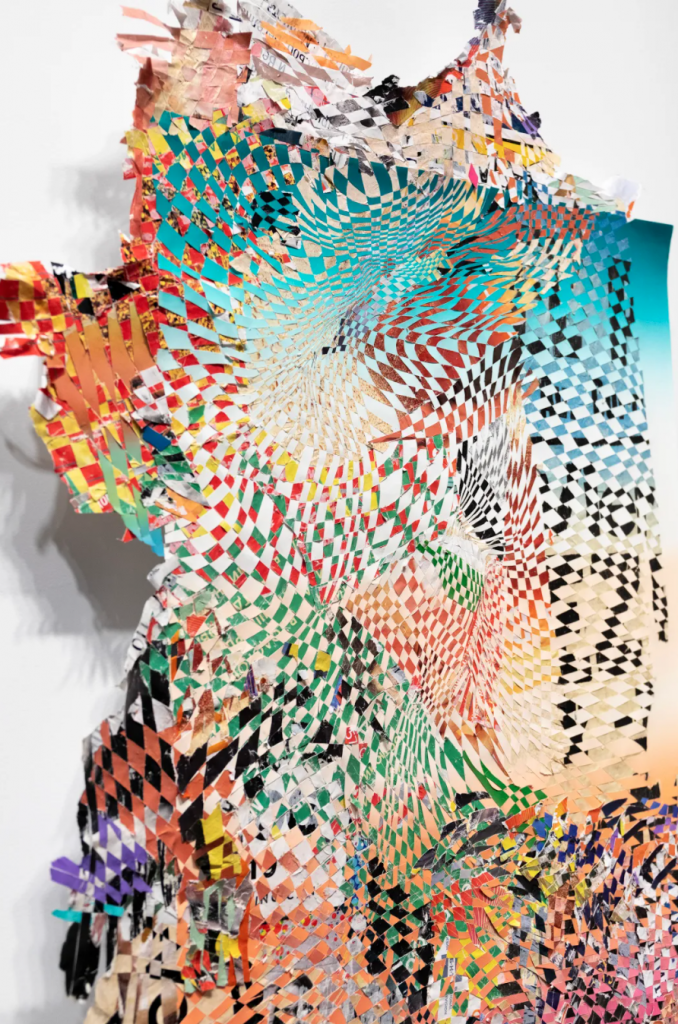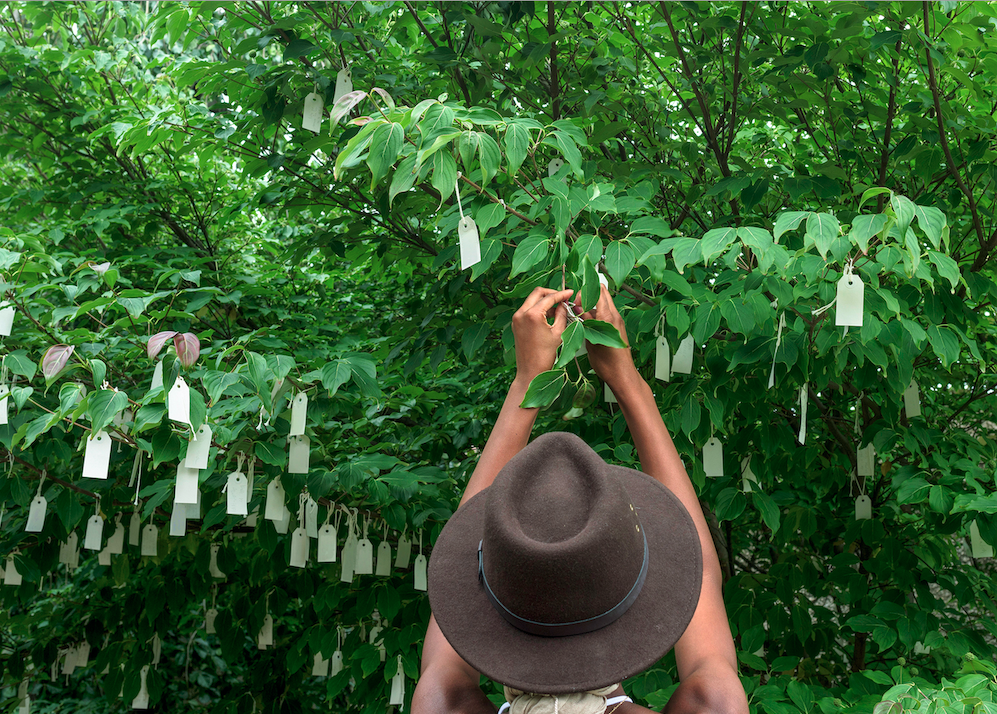With Earth Day just a day away, we're planting a few ideas that relate to taking care of our planet-and ourselves. Shop an eco-conscious Smithsonian craft marketplace, pin your hopes for the world's future on a digital Wish Tree, and learn how the Smithsonian and cultural organizations all over America are working together to provide solid information about vaccinations.
They're among the offerings designed to make sure you continue to enjoy what you,ve come to value from Smithsonian Associates: programs and experiences that are entertaining, informative, eclectic, and insightful.
Bringing Vaccine Information Home

The Smithsonian and cultural organizations in communities across the nation are collaborating to bring Americans the facts they need to make informed decisions about vaccination. The new initiative "Vaccines & US: Cultural Organizations for Community Health"-which officially launches today-shares the science, history, and cultural impact of infectious disease and vaccines in order to build an understanding of our current moment, where we've been, and where we go from here. "Vaccines & US" curates an online hub of resources about COVID-19: the safety, efficacy and value of vaccines; practical advice for having conversations about vaccination; American communities' and cultures' response to the pandemic; and the history of pandemics and vaccination in the U.S. From videos and infographics to activities and educational curricula, the scientific content is vetted by an advisory group of medical professionals from collaborating organizations.
Learn More
The Future of Asian Food
 Jet Tila, Christina HÃ , Genevieve Villamora, Vilailuck "Pepper" Teigen (left to right) (Photo credits, left to right: NA, Julie Soefer Photography, Bad Saint, Jenny Huang )
Jet Tila, Christina HÃ , Genevieve Villamora, Vilailuck "Pepper" Teigen (left to right) (Photo credits, left to right: NA, Julie Soefer Photography, Bad Saint, Jenny Huang )
Asian foods and cooking have long been an indelible part of America's food culture, and yet we also harbor complicated relationships with the people who prepare our meals. Earlier this year, Asian American activists carried signs reading "Love Us Like You Love Our Food" as they denounced a surge of anti-Asian racism in communities across the United States during the global pandemic. CULINASIA: The Future of Asian Food in America is a dynamic free series of virtual conversations that explore food legacies and the ways in which Asian diaspora cuisine continues to change and enrich our lives. Join chefs, food writers, food entrepreneurs, home cooks, cookbook authors, and other participants whose heritage and experiences span the complex spectrum of Asian diaspora identities in the United States as they discuss the successes, challenges, and future of Asian food in America.
A collaboration among Smithsonian Associates, the Smithsonian Asian Pacific American Center, and the Freer Gallery of Art and Arthur M. Sackler Gallery, the series offers four public programs on Wednesdays in May and June. The first two examine the vital role that Chinese restaurants play in American cities (May 5) and how Southeast Asian food businesses are contending with the challenges of a global pandemic and growing anti-Asian racism (May 19). Subsequent conversations focus on the misperceptions and myths that surround the nature of Asian food (June 9) and use the Oscar-nominated film Minari to examine the lives of both fictional and real-life Asian farmers (June 23).
Saving Chinatown and Our Legacies
Southeast Asia Got Something to Say
Climate-conscious Crafts
 Wall hanging made with recycled materials by Galen Gibson-Cornell
Wall hanging made with recycled materials by Galen Gibson-Cornell
Tomorrow is Earth Day, and here's the perfect way to stylishly extend its spirit: Shop for one-of-a-kind pieces at Craft Optimism, an online Smithsonian marketplace featuring beautifully made, hand-crafted American goods created by artists whose working methods respond to climate change. For example, Kate Cusack takes zippers discarded by fashion designers and gives them a new life as jewelry. Designer Lula Castillo has created a collection of eco-friendly accessories that are made with sustainable materials such as nuts, rare beans, and seeds collected in the Amazon rainforest. And the jewelry of Griffith Evans begins as wood harvested from trees in a Northern New Mexico orchard decimated by drought.
They're just of a few of the artists-each with a unique story-represented among Craft Optimism's array of jewelry, wearables, accessories, art works, and home decor items available for purchase April 24 to May 1. The marketplace is organized by the Smithsonian Women's Committee and Honor Our Future, an organization that uses art to engage the public on climate change. Proceeds support Women's Committee grants that underwrite research, education, and conservation projects throughout the Smithsonian.
Themes related to Earth Day are also reflected in upcoming Smithsonian Associates Streaming-and in-person-programs. Christine Price-Abelow, a Smithsonian Gardens horticulturist, offers a virtual spring bloom tour at the National Museum of the American Indian that includes an overview of the museum's landscape and its evolution over the last 15 years (Tuesday, April 27). Naturalist and tree expert Melanie Choukas-Bradley explores Washington's distinction as the "City of Trees" as she discusses more than a century of its rich and fascinating arboreal history (Thursday, April 29). Rise early on a crisp spring morning and enjoy a socially distanced, small-group walk at stunning Great Falls National Park with naturalist Keith Tomlinson (Wednesday, May 5 or Thursday, May 20).
Craft Optimism
Post a Wish
 Yoko Ono's Wish Tree for Washington, DC, at the Hirshhorn Museum and Sculpture Garden. Photo by Jazmine Johnson
Yoko Ono's Wish Tree for Washington, DC, at the Hirshhorn Museum and Sculpture Garden. Photo by Jazmine Johnson
"Make a wish. Write it down on a piece of paper. Fold it and tie it around a branch of a Wish Tree. Ask your friend to do the same. Keep wishing. Until the branches are covered with wishes." -Yoko Ono, 2014
One of the many sculptures in the Hirshhorn Museum's sunken garden is actually a living tree. Tucked along the northern wall of the garden is a Cornus kousa, known as a Kousa Dogwood. This Wish Tree for Washington, D.C. was a gift from artist Yoko Ono in 2007. Traditionally every summer visitors had the opportunity to write their wishes on tags and hang them from this tree. In the off-season, they were invited to whisper their wishes to the tree. Periodically throughout the course of the summer, Hirshhorn museum staff removed the wishes and sent them to Ono's "Imagine Peace Tower" in Reykjavik, Iceland. The wishes from this tree joined millions of others from trees around the world to become part of Ono's global peace project.
This year the museum's Wish Tree-like so many things-has gone digital. Here's how to add yours to the virtual branches: Hand-write your wish on a piece of paper, and then take a photo or video of it. Through April 30 post the photo or video to Instagram tagging @hirshhorn, #Hirshhorn, #WishTreeDC, and #YokoOno.
The Hirshhorn will post wishes on their website, tie as many as they can to the artwork, and share every virtual wish with the artist. And may your wish come true.
Yoko Ono's Wish Tree
A Classical Take on Trout Season

While we all wait for live Smithsonian concerts to resume, here's a video to whet your appetite for Schubert-and as the spring fishing season opens, for trout as well. The Smithsonian Chamber Music Society offers a free program in which soprano Ah Young Hong and Kenneth Slowik, the society's artistic director, take a close look at Schubert's 1817 song Die Forelle ("The Trout") for solo voice and piano based on the text of a poem by Christian Friedrich Daniel Schubart. Slowick examines the historical context of Schubert's work and his instruments as well as the particular relation of the rhythm of poetic texts to the music to which they are set-illustrated with examples that range from Schubert through Ellington and the Beatles to Cardi B. The 52-minute presentation is a real "catch" for chamber music lovers.
Watch the Video